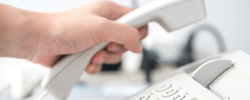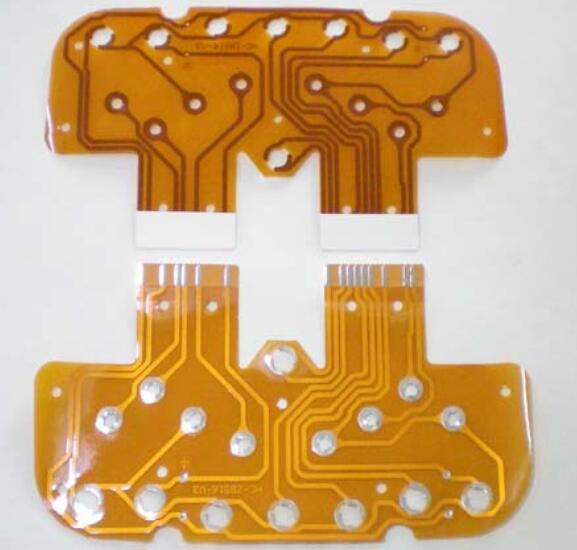
With the gradual development of electronic products towards short, small, light and thin, the advantages of FPC softboard are becoming more and more obvious, and the market demand is also increasing. Due to the many production processes of softboard, the board defects are often caused by improper operation. Here are 10 common problems. Let's have a look.
1. Bubbles
There are bubbles between the FPC printed board lines or on the side of a single line after development. Main reasons: Bubbles between two or more lines are mainly caused by too narrow line spacing and too high lines. During screen printing, the solder mask cannot be printed on the base material, resulting in the presence of air or moisture between the solder mask and the base material. During curing and exposure, the expansion of the gas caused by heat is mainly caused by too high lines.
When the scraper is in contact with the line, the line is too high, and the angle between the scraper and the line increases, so that the solder block cannot be printed to the line root, so that there is gas between the side of the line root and the solder block layer, and bubbles will be generated after heating. The solution is as follows: during screen printing, visually check whether the screen printing material is fully printed to the base material and the side wall of the line, and strictly control the current during electroplating.
2. Resistance welding in hole
The reason is that the paper is not printed in time during screen printing, which causes too much residual ink to accumulate on the screen, and the residual ink is printed into the hole under the pressure of the scraper. The solution is to print the paper in time, and too low mesh number of the screen will also cause solder resistance in the hole. The high mesh screen should be selected for plate making, and the viscosity of the printing material is too low. Replace with the printing material with high viscosity, the size of the scraper screen printing angle, properly adjust the scraper screen printing angle, and the scraper knife edge becomes round, Sharpen the blade of the scraper.
3. Jump print is also called flying white
The main reason is that the graphic lines are too high due to the excessive electroplating current and the thick coating. When screen printing FPC printed boards, because the scraper knife and screen printing frame are at a certain angle for screen printing, the lines on both sides of the line are too high, so the ink will not be placed. The other reason is that the scraper knife has a gap, and the ink will not be placed at the gap, resulting in skip printing. The main solutions are to control the electroplating current and check whether the scraper knife has a gap.
4. Oxidation
The copper foil line under the solder mask layer of the FPC printed board showed signs of blackening. The reasons were that the water was not dried after wiping the board, and the surface of the printed board was splashed by liquid or passed by hand mold before the solder mask. The solution was to visually check whether the copper foil on both sides of the printed board was oxidized during screen printing.
5. The pattern has pinholes
The reason is that there is dirt on the photographic plate, so that the part of the printed board that should be exposed to light does not see light during the exposure process, resulting in pinholes in the graphics. The solution is to check the cleanliness of the photographic plate frequently during the exposure process.
6. Dirt on the surface
Because the FPC printed board screen printing room is a clean room, there should be an electrostatic wire at the screen printing outlet to absorb the flying hairs and other debris in the air. Therefore, in order to reduce the surface dirt, it is necessary to fully ensure the cleanliness of the clean room and properly implement some specific measures: for example, when entering the clean room, it is necessary to fully ensure the cleanliness of the operator, avoid irrelevant personnel passing through the clean room, and regularly clean the clean room.
7. Uneven surface
During screen printing, we did not pay attention to printing paper in time to remove the residual ink of the screen plate, resulting in uneven surface. The solution is to print paper in time to remove the residual ink of the screen plate.
8. Ghosting
There are regular ink spots near the pad on the entire FPC printed board. The reason is that the FPC printed board is not firmly positioned and the residual ink on the screen is not removed and accumulated on the printed board in time. The solution is to fix it firmly with positioning pins and remove the residual ink on the screen in time.
9. Inconsistent color on both sides
The reason may be that the number of knives for screen printing on both sides is very different, and there is also a mixture of new and old ink. It is possible that one side uses the new ink after mixing, and the other side uses the old ink which has been placed for a long time. The solution is to try to avoid the above two situations.
10. Chapping
Due to insufficient exposure during FPC exposure, there are small cracks on the surface of the board. The solution is to measure the exposure so that the combined values of exposure lamp energy, exposure time and other parameters reach 9-11 exposure levels, and there will be no cracks in this range.

Online
Service
ConsultationTime:9:00-18:00
Hot
Line
0755-27847787
7*24H Service
Follow
Us
 Website
Website